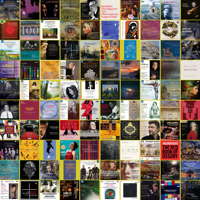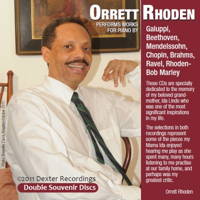 SPONSORED: CD Spotlight. Most Remarkable - Jamaican pianist Orrett Rhoden, heard by Bill Newman.
SPONSORED: CD Spotlight. Most Remarkable - Jamaican pianist Orrett Rhoden, heard by Bill Newman.
All sponsored features >>
Three Contemporary Ballets in Rome
GIUSEPPE PENNISI was in the audience for 'Herman Schmerman', 'Walking Mad' and 'From Afar', to music by Thom Willems, Maurice Ravel, Arvo Pärt and Ezio Bosso
Teatro dell'Opera di Roma's ballet season started with two classical titles : Notre Dame de Paris with music by Maurice Jarre and choreography by Roland Petit (reviewed in this magazine on 20 September 2021) and the traditional Christmas show The Nutcracker with music by Pyotr Ilyich Tchaikovsky and choreography by Giuliano Peparini (reviewed here on 28 December 2021).
On the evening of 25 February 2022, there was a turning point: a triptych of modern ballets was unveiled, using recorded music. In these three short works, two of which are either a Rome debut or a world premiere, the score ranges from electronic to chamber music (also for piano solo) and to neo-romantic style. It would have been difficult, if not impossible, to perform them in the pit with the theatre orchestra. The stalls were almost full, but there were many empty boxes, a sign that the COVID19 virus is still scary and driving audiences away from theatres. On the other hand, there were many young people, attracted by contemporary ballets. Consider that in Rome, there are two other theatres that offer contemporary ballet, on a recorded basis.
The main performers were the étoile Susanna Salvi and the first dancers Claudio Cocino, Michele Satriano and Alessio Rezza, among the ballet stars who have a loyal audience.
The program started with Herman Schmerman by William Forsythe, on music composed specifically by Thom Willems. Created in 1992, it is a ballet without plot divided into two short parts, with the sole purpose of seeing talented dancers perform with costumes designed by Gianni Versace. 'The first time I heard the phrase Herman Schmerman', said Forsythe, 'was in the film The Mystery of the Missing Corpse with Steve Martin. In my opinion, it is a fascinating title even if it means nothing. Even this ballet means nothing. It is a very funny piece about dance. It's all about talented dancers dancing, and that's good, isn't it?' The ballet was never before staged in Rome. The lights are by Tanja Rühl and William Forsythe. It is an abstract ballet, conceived as a tribute to George Balanchine. The first part is a quintet, the second a duo. The bodies intertwine and amalgamate, especially in the second part when the dance seems to want to overcome gender differences and the two protagonists wear the same skirt designed by Gianni Versace. In short, pure abstraction.
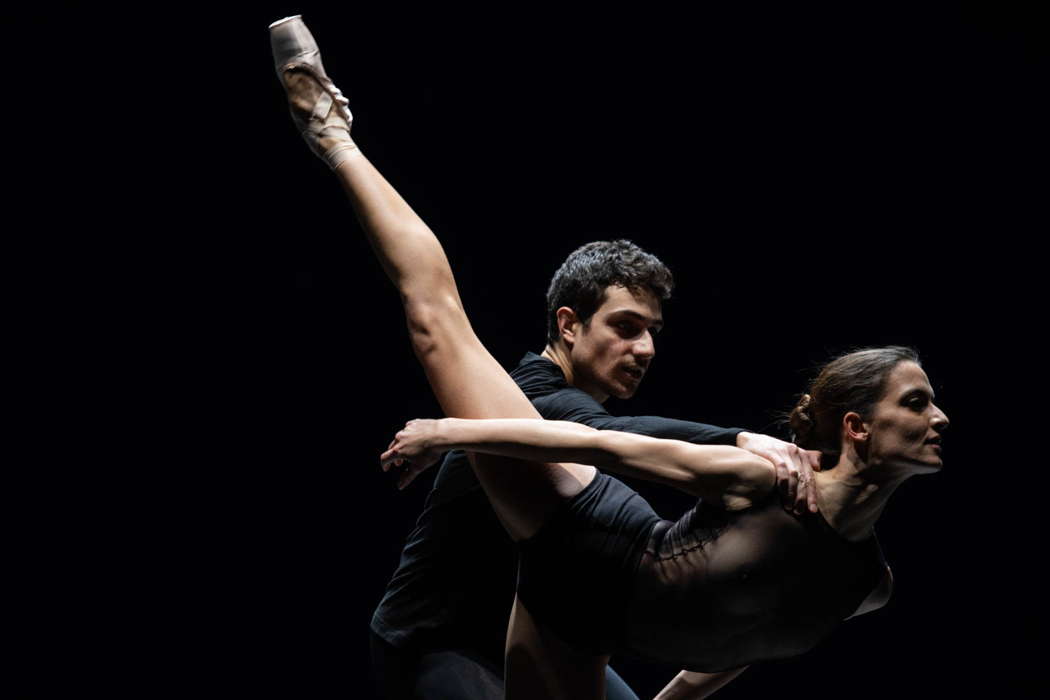
A scene from Teatro dell'Opera di Roma's Herman Schmerman. Photo © 2022 Fabrizio Sansoni
The second title of the evening was Walking Mad created by the Swedish Johan Inger in 2001 and already presented in Rome in March 2018. On the notes of Ravel's Bolero and Pärt's Für Alina, a solo piano masterpiece, Inger brings to the stage a wall that divides, moves and opens, generating glimmers of communication. 'A journey full of surprises and unexpected turns', Inger explains. 'If you look at it carefully, Walking Mad is a circle. In the end, we return to the beginning, but something has changed, in the spirit, in the energy. We went from something colourful to something gray, static.' The Ballet Rome production is revived by Yvan Dubreuil, the lights are by Erik Berglund, sets and costumes by Inger himself. Between waves of emotions – from laughter to tears – men and women meet, showing us different relationships and different moments of the same relationship. The movable wall becomes the symbol of barriers in interpersonal relationships. The less young in the audience feel the echo of the 'trilogy of incommunicability' by Michelangelo Antonioni of the 1960s. The ballet is choral; the different pairs are distinguished by the colours they wear.
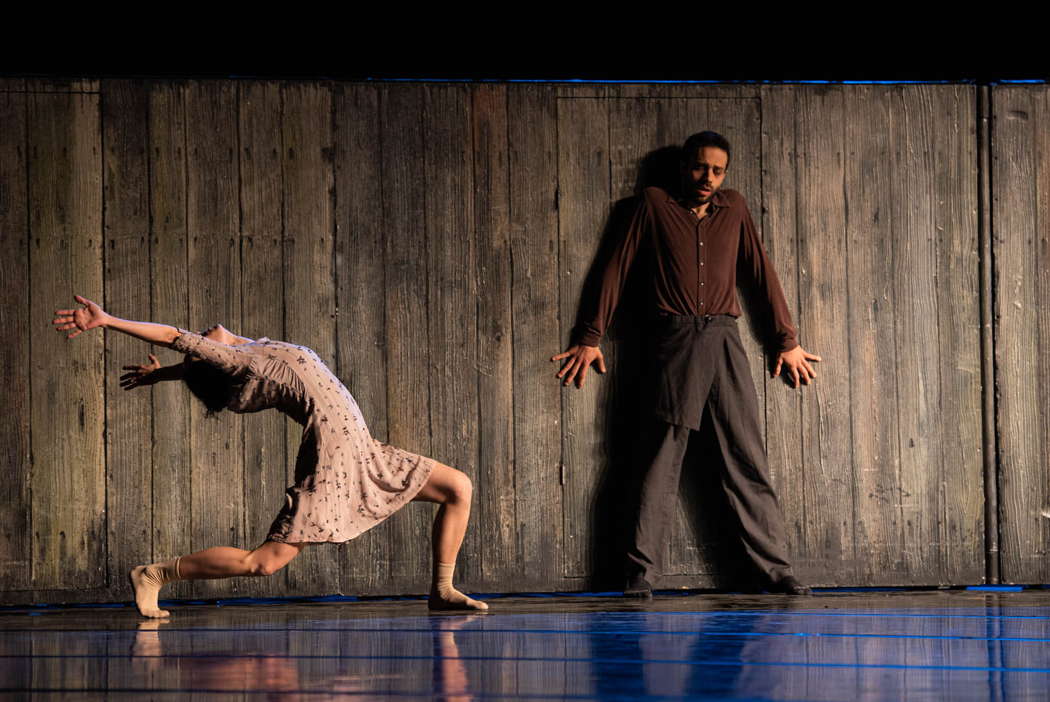
A scene from Teatro dell'Opera di Roma's Walking Mad. Photo © 2022 Fabrizio Sansoni
To close the evening, a world premiere: From Afar, a new creation for the corps de ballet of the Teatro dell'Opera signed by choreographer Nicolas Blanc to music by the late Ezio Bosso: the first two movements of the Symphony No 1, Oceans. 'From Afar', explains the French choreographer who has been active for some time in the United States, 'is about women and men, about a human adventure, an adventure of hearts and souls. It is a story that relates presence and absence, closeness and distance. Through this journey, I think of the ephemeral element of life, but also of the vital force of the moving bodies that follow the oceanic tide of Ezio Bosso's glorious symphony'. The sets of this new creation are by Andrea Miglio, the costumes by Anna Biagiotti and the lighting is by Fabrizio Marinelli. A truly choral ballet in which a significant part of the theatre's corps de ballet is engaged. It illustrates a journey, at the same time real and symbolic, in which the closeness and distance of human beings are emphasized.
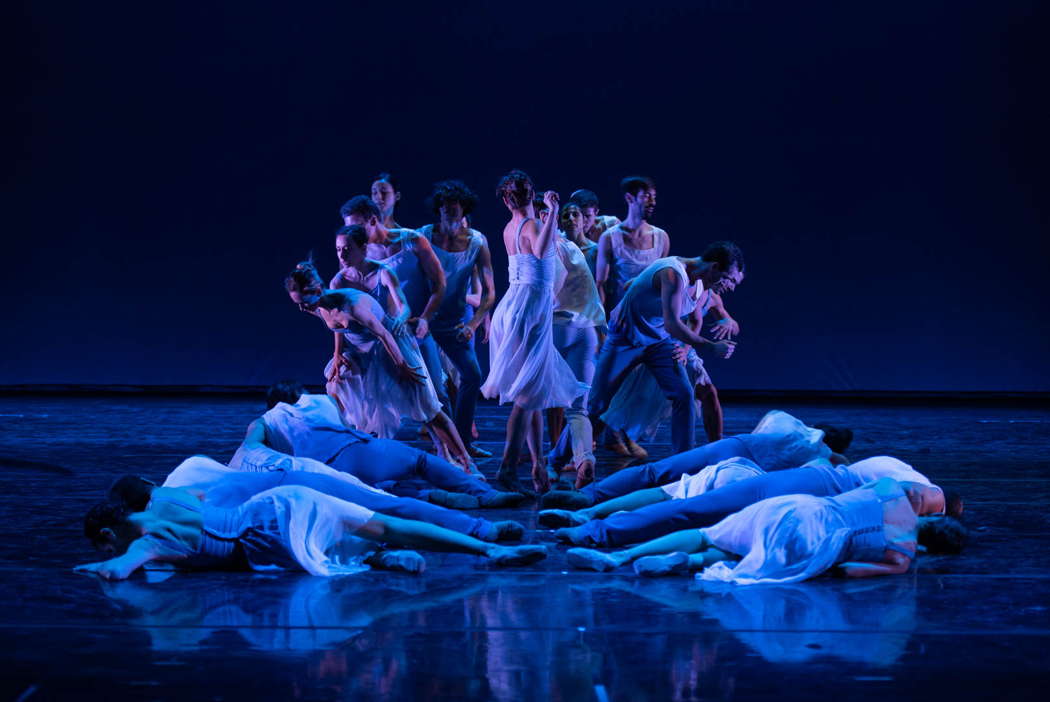
A scene from the ballet From Afar. Photo © 2022 Fabrizio Sansoni
The three ballets may seem, and are, very different, from both a musical and choreographic point of view. The common thread that gives integrity to the performance is the analysis of couple relationships, an aspect not usual for an evening of ballets. There was warm applause.
Copyright © 28 February 2022
Giuseppe Pennisi,
Rome, Italy



